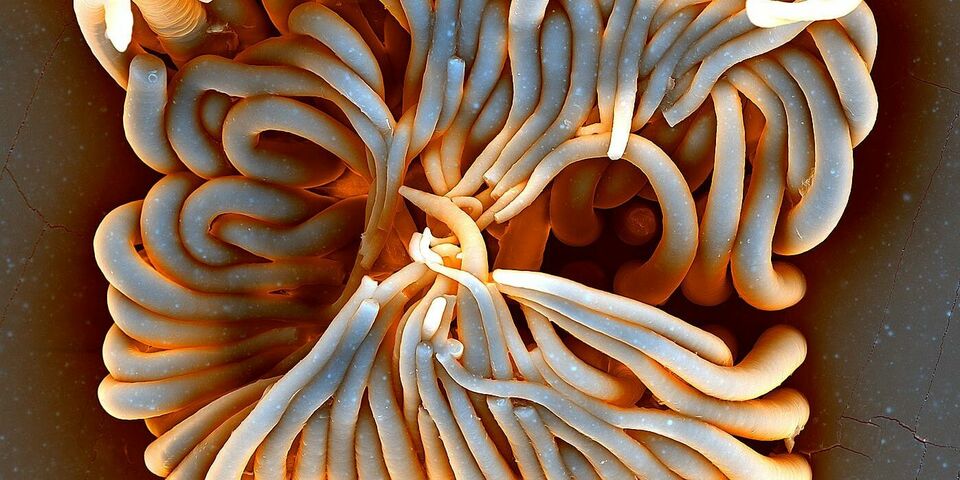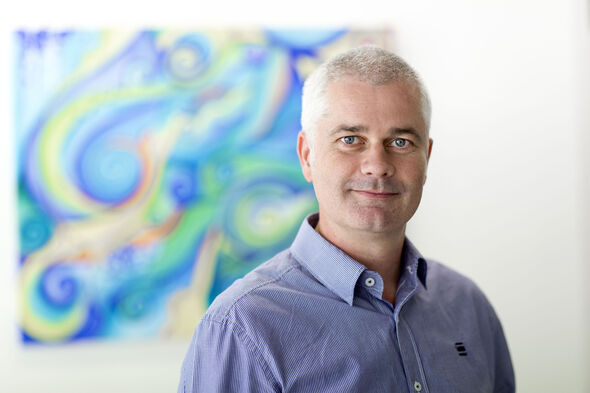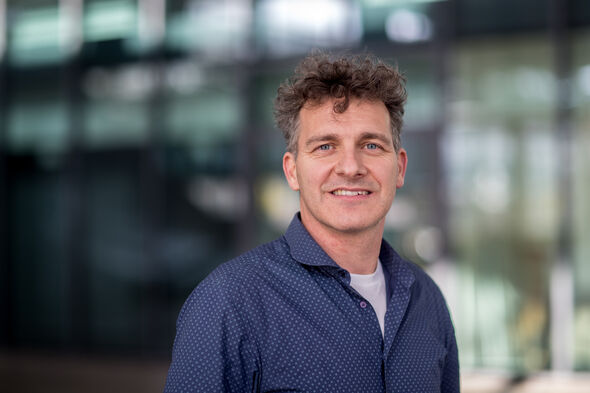ERC Advanced Grants for TU/e professors Bakkers and Den Toonder
TU/e professors Erik Bakkers and Jaap den Toonder have both been awarded an Advanced Grant of the European Research Council. Bakkers (department of Applied Physics) will receive 2.5 million euros to carry out this research on the teleporation of Majorana particles. Den Toonder (Mechanical Engineering) will get three million euros for the development of a new system to better understand the effect of forces and flows on cells and tissues.
Unraveling forces on cells with artificial cilia
Jaap den Toonder, Professor of Microsystems, is developing a completely new system to better understand the effect of forces and flows on cells and tissues. He is using a special laser to create artificial cilia, inspired by vibrating hairs that occur in nature. Den Toonder is receiving an ERC Advanced Grant of 3 million euros to carry out this research.
Almost every process in biology, from embryonic development to organ function and the incidence of disease, is based on biomechanical interactions between cells and their environment. If we understand these interactions, we can also better understand, for example, the spread of tumor cells or the brittleness of bones. The forces and flows between cells are often investigated by imitating fluid flows with valves and pumps, but this does not allow you to achieve the precision and control needed to make further steps in this research.
Synchronized motion
Vibrating hairs inspired Den Toonder to build a new system, with which you can precisely control and study these forces and flows in a laboratory environment. Vibrating hairs, or cilia, are ultra-thin microscopic hairs, which move tightly packed together like a crowd doing the 'wave' in a stadium. Cilia are found everywhere in nature, also in our human body where they play an important role. Their synchronized movement, for example, helps to remove mucus from the lungs and transport eggs from the ovaries to the uterus. By regulating how the fluid flows around an embryo, vibrating hairs even ensure that organs such as the heart develop on the correct side of the body.
Just like real cilia, the artificial hairs must, after an environmental signal, be able to initiate a flow in a fluid or exert mechanical forces on their environment. Then they must be able to detect the forces of reaction from the environment. And all in the same hair. Den Toonder: "The cilia we want to build consist of flexible polymers with magnetic nanoparticles. By activating them with an electromagnet, we can make the hairs move locally exactly as we want them to. This enables us to generate a flow in the surrounding fluid or forces on cells that we grow in the vicinity of the vibrating hairs. We then want to measure the biomechanical response of the cells very accurately."
Glass mold
The cilia that Den Toonder wants to build are only ten micrometers long and no thicker than one micrometer. He also wants to place the hairs very close to each other and give them just the right flexibility to be easily moved by the magnetic fields.
To build them, Den Toonder needs a brand new laser with a small focal point and ultra-short pulses. The laser inscribes very precise structures on a micro scale in a glass plate, which then serves as a mold with which the cilia are formed by means of a casting process. Den Toonder then places these hairs in a so-called microfluidic chip, a piece of plastic with small fluid channels, in which cells and tissues can also be grown.
"We can vary the pattern in which we apply the hairs in the chip. For each biomechanical process we want to study, we make a specific chip. For example, compare it to a CD and CD player. The CD is the chip, it is replaceable. The CD player is our entire system of electromagnet, control and measuring equipment", says Den Toonder.
Besides Den Toonder, Erik Bakkers is also a recipient of an ERC Advanced Grant. Read more about his research below.
Demonstrate teleportation of Majorana particles with new nanomaterial
Erik Bakkers, Professor of Advanced Nanomaterials & Devices, focuses his research on a new nanomaterial and thereby hopes to conclusively demonstrate the teleportation of Majorana particles. This is an essential step in the construction of the Majorana quantum computer. Bakkers will receive anAdvanced Grant of 2.5 million euros.
The award to Erik Bakkers builds on his highly successful ERC Consolidator Grant of 2013 that helped fund his presentation in 2017 of an advanced quantum chip with nano-hashtags and consequently in 2018 the long expected zero-bias peak, which has exactly the same peak as was predicted by the Majorana theory.
Bakkers: "These results are extremely important, but also showed us that the current combination of semiconductor (indium antimonide) and superconductor (aluminum) is not ideal for the next step in Majorana research. "The transition between these two materials is not very sharp, because the aluminum reacts chemically with the indium antimonide. In addition, high magnetic fields are required to reach the required topological state, which is very difficult. The topology is intended to protect the Majorana particle so that it is much more stable than other quantum states.
Robust crystal lattice
Bakkers therefore wants to use the Advanced Grant to develop a new material combination: topological crystalline insulator nanowires of tin telluride coupled to the superconductor lead. This material occurs naturally in a topological state, which is formed by the symmetry of the crystal lattice. Because the crystal lattice of this material is very simple, the same as that of kitchen salt, everything is much more robust. Lead is also a stronger superconductor than aluminum and this combination should make it easier to find and manipulate Majorana conditions.
Bakkers begins the research by growing high-quality tinelluride nanowires. For this growth process he also wants to use a growth strategy that has never been used for these materials before, namely a high-vacuum technique (Molecular Beam Epitaxy) to produce extremely pure material.
Teleporting properties
"The results from the earlier ERC study already gave strong indications of the presence of Majorana particles. But in order to really demonstrate their presence, two things have to be proven: teleportation and interdependence. Using this Advanced Grant I want to prove teleportation", says Bakkers. This requires an entangled pair of particles to appear on both sides of the nanowire and these states must be linked. Bakkers: "For example, if I change the electric field on one side, the particle on the other side must simultaneously show the same change." Quantum teleportation forms the basis of the qubit, the building block of the Majorana quantum computer. "That application is on the distant horizon", says Bakkers.




Discussion